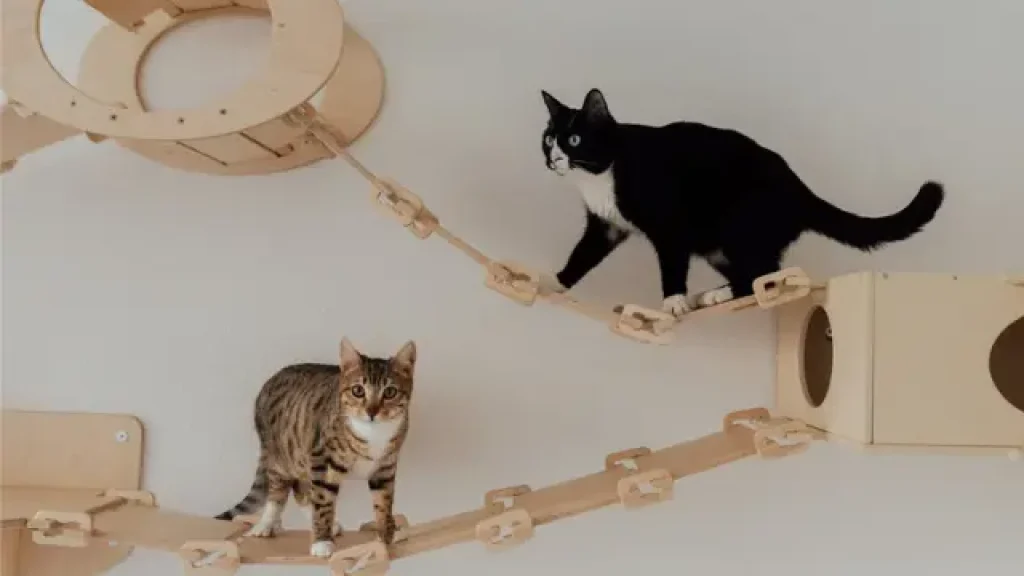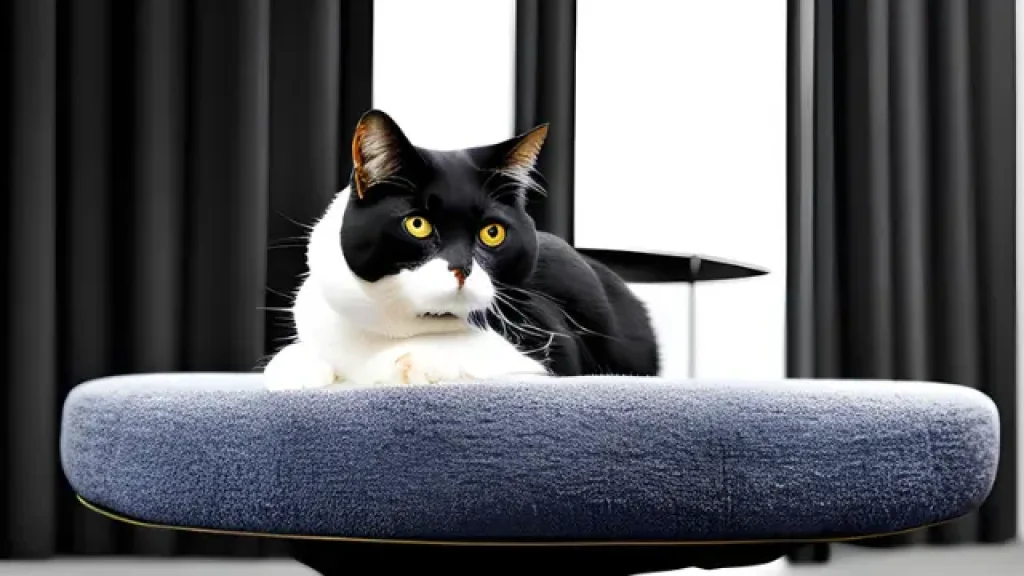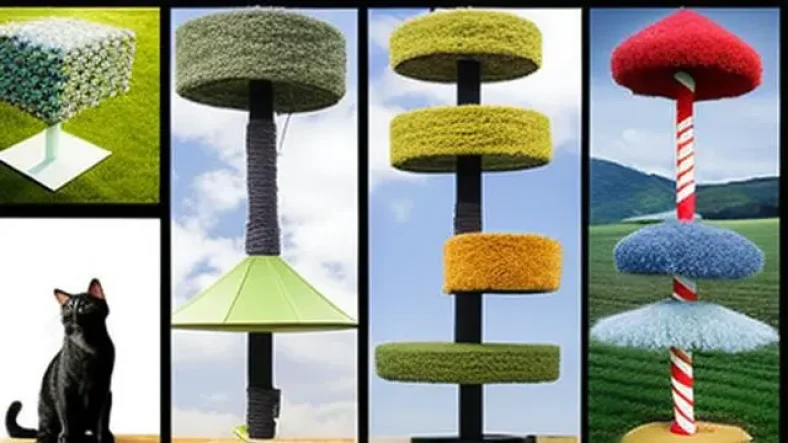Are you in the market for a cat tree? If so, then you’ve come to the right place! Picking out the perfect cat tree can be overwhelming – there are so many options and styles. But don’t worry – we’re here to help make sure your kitty has just what they need.
We’ll go through all of the factors that should be taken into account when purchasing a cat tree and provide helpful tips on how to pick the best one for your furry feline friend.
Cat trees offer cats not only an elevated spot from which to nap but also a place where they can scratch their claws without ruining furniture. When selecting just the right one, it’s important to consider several things like size, material, stability, and price range.
You’ll want to take into account your pet’s age and personality as well as preferences and lifestyle before making any final decisions.
So if you’re ready to get started, let’s dive in and find out exactly what makes a great cat tree for your beloved fur baby!
Contents
Benefits Of Cat Trees
Cat trees provide numerous benefits to cats. Not only do they offer a secure place for cats to climb and exercise, but they also give them a designated scratching post that helps protect furniture from claw marks. Plus, cat trees can help keep cats mentally stimulated by providing opportunities to play and explore in an environment designed just for them.
Another benefit of having a cat tree is the added space it provides for your pet. Cats often enjoy having their own space where they can rest undisturbed or observe their surroundings without feeling overwhelmed.
With multiple levels and platforms, cat trees provide plenty of room for cats to move around freely while still enjoying the safety of being close to home.
In addition to offering physical and mental stimulation, cat trees are great alternatives to other forms of expensive cat furniture since they usually cost less than traditional pieces such as beds or couches.
This makes them ideal options for those looking for ways to save money on pet supplies while keeping their furry friends happy and healthy.
There are various types of cat trees available on the market today which will be discussed further below.
Types Of Cat Trees
Did you know that 80% of cats prefer to scratch on vertical surfaces? This means they need a scratching post or climbing tower! When looking for the perfect cat tree, there are several types to consider. Here is a list:
- Scratching Post – this can be made from rope, cardboard, wood, and other materials such as sisal rope.
- Climbing Tower – this type features platforms at different heights so your kitty can climb up and down with ease.
- Condo Furniture – these are like mini houses where your cat can hide away in privacy.
- Wall-Mounted Shelves – these shelves provide an elevated perch for your feline friend to rest while keeping them off furniture.

When deciding which type of cat tree is best for your furry companion, it’s important to take into account their size, activity level, and preferences.
Additionally, make sure to measure the space available before purchasing one so you don’t end up buying something too small or large for your home.
To ensure safety and maximize comfort for your pet, pick materials that will withstand regular use without wearing out quickly. With careful consideration when selecting a cat tree, both you and your purring pal will enjoy many years together!
Now let’s look at how to size the cat tree for your cat.
Sizing The Cat Tree For Your Cat
When buying a cat tree, it’s important to consider the size of your cat. A good rule of thumb is that if two cats share the same tree, both should be able to fit comfortably on it at once.
To determine the right size for your cat, measure them from head to tail while they’re lying down. Add five inches or more to that measurement; this will give you an idea of how big the tree needs to be in order for them to move around and use its features freely.
Make sure there is enough clearance between any perching platforms and other objects so their tails won’t get caught. With these sizing considerations taken into account, you’ll have a better chance of selecting a suitable cat tree for your pet.
Now let’s discuss design considerations when picking out a cat tree.
Design Considerations
Having figured out the size of your cat tree, it’s time to consider the design. Cat trees can come in a variety of styles, from modern and sleek to rustic and natural.

Material is also something to take into account; carpeted towers tend to be more affordable but may not last as long as sisal-wrapped posts or solid wood structures.
Furthermore, color matters too – choose one that complements your home décor for an aesthetically pleasing look. The shape should also be considered when picking a cat tree; square designs offer plenty of stability, whereas round ones are perfect for providing more climbing options.
Finally, safety features play an important role in choosing the right cat tree for your feline friend.
Make sure you pick one with wide bases and no sharp edges to ensure maximum security while they climb or jump around!
Safety Features To Look For
When selecting a cat tree, safety should be the primary consideration. Look for features that will ensure your pet’s well-being and prevent dangerous accidents. Scratch-proof material is essential to protect both your furniture and your cat from snags or tears.
An anti-tipping base also helps to keep the structure stable as cats climb, jump, and play on it. Secure steps add an extra layer of protection since cats can easily slip off small ledges or platforms without them.
Lastly, heavy-duty construction is important for durability; if you opt for a cheaper option, make sure it has sturdy materials that won’t break over time.
Make sure all these components are included in any potential cat tree before moving on to tips for selecting a durable product.
Tips For Selecting A Durable Product
As the old saying goes, “Buy cheap, buy twice.” When selecting a cat tree, it is important to consider the durability and longevity of the product. Investing in a well-made cat tree can save money down the road, as you won’t have to replace it after just a few months of use.
Here are some tips for finding a durable cat tree that will stand up to your feline friend’s demands:
First, look at the material used to make the cat tree. Materials like solid wood or metal provide more stability than flimsy particleboard trees.
Also, check for scratch-proof fabrics such as leather or canvas that resist wear and tear from claws better than softer materials such as velvet or corduroy. High-quality products often come with multiple levels– this provides extra stability against tipping over due to heavy jumping.
Next, examine how sturdy the structure is when assembled. Make sure all parts fit together tightly without wobbly sections that could collapse under the weight.
If possible, test out the sturdiness yourself by pushing on different parts of the structure while not fully assembled so you can identify weak points before putting it together completely.
You should also ensure there are no sharp edges that may injure your pet upon contact and confirm that any attachments like toys and perches don’t jut out too far from the frame, which might cause instability and potential injury if they catch onto something during playtime.
Finally, search for reviews online about other people who have purchased similar models in order to get an idea of how long these cat trees last in real-life scenarios with cats actively using them over time – this way, you’ll know exactly what kind of quality you’re getting before making your purchase!
Where To Buy A Cat Tree
When shopping for a cat tree, there are several places to consider. Many pet stores carry cat trees of all sizes and price ranges. Prices can vary widely depending on the type and size of the product you choose. Check out online retailers like Amazon or Chewy.
They often offer discounts on select items, so it’s worth taking a look before making a purchase elsewhere.
Another option is to buy directly from manufacturers or boutique shops that specialize in cat furniture.
These outlets typically have better prices because they don’t need to pay for overhead costs associated with running traditional retail locations.
Furthermore, many of these sellers may be able to help customize your order if needed, such as adjusting the height or adding additional features like scratching posts or tunnels.
Lastly, keep an eye out for sales at local pet stores. Oftentimes, seasonal events will feature incentives such as discounts and free shipping – great opportunities to save some money while still getting high-quality products!
Frequently Asked Questions
Q: Can cat trees help with cat behavior problems?
A: Yes, cat trees can provide cats with an outlet for their natural climbing and scratching instincts, which can help prevent destructive behavior such as scratching furniture or climbing curtains.
Q: Can multiple cats use the same cat tree?
A: Yes, but it’s important to make sure the cat tree is big enough for all the cats to comfortably use at the same time. It’s also a good idea to have multiple perches or platforms so each cat can have their own space.
Q: How do I clean my cat tree?
A: Regularly vacuuming or brushing off the cat tree can help remove any loose fur or debris. For more thorough cleaning, use a mild soap and water solution to wipe down the surfaces, and make sure to let it fully dry before letting your cat use it again.
Q: Can I make my own cat tree?
A: Yes, there are many DIY cat tree plans and tutorials available online for those who want to make their own cat tree. However, it’s important to make sure the materials used are safe for cats and that the structure is sturdy and stable.
Q: How tall should a cat tree be?
A: The height of the cat tree depends on the size and activity level of your cat. Generally, a taller cat tree with multiple levels and perches is better for active and playful cats, while a shorter one with a cozy hiding spot is better for older or less active cats.
So There You Have It..
It’s important to pick the right cat tree for your furry friend. With so many different types and sizes available, it can be overwhelming when trying to decide which one is best. Fortunately, there are a few tips to help make the process easier.
First, you’ll want to introduce your kitty slowly to their new tree by letting them explore on their own terms. If they seem scared or hesitant, give them time alone with it until they become comfortable. As far as replacing the cat tree goes, that will depend on how much wear and tear your cat puts on it over time.
When it comes to making sure your furniture stays scratch-free, providing an appropriate scratching post nearby should do the trick.
You might also consider using double-sided tape or other deterrents around areas where cats shouldn’t scratch.
Finally, if you have a kitten in the house, make sure the cat tree is stable and secure – kittens are curious little creatures!
Picking out a cat tree isn’t always easy, but following these steps can help ensure that both you and your feline companion get exactly what you need: a safe space for playtime as well as some peace of mind for those inevitable moments of mischief!


